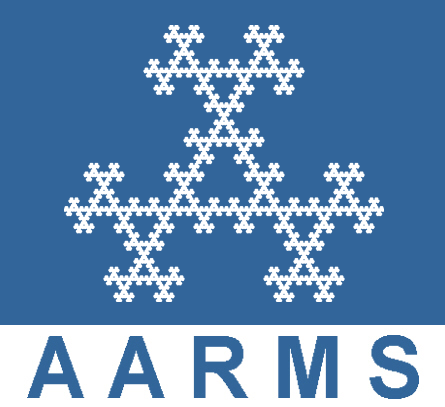2015 CMS Summer Meeting
University of Prince Edward Island, June 5 - 8, 2015
- MALAK ALMUTAIRI, Acadia University
Investigating Addition Tables for Digit Representations [PDF]
-
In my research, I am investigating the complexity of algorithms for computation with multidimensional digit representations. Digit representations in one dimension, such as base 10 or base 2, were a major historical advance for arithmetic. The standard representation of vectors involves multiple components, rather than being purely a digit representation, so my research asks the question: are multidimensional digit representations computationally useful?
The first step in this research project is to investigate addition tables for multidimensional representations. A multidimensional representation with $n$ digits can be mapped to a one-dimensional representation with $n$ digits, but with a non-standard addition table. This talk will present some results on addition with novel addition tables.
- SALIHAH ALWADANI, Acadia University
Genetic Algorithm [PDF]
-
The sample genetic algorithm is modeled by Nix and Vose as Markov Chain, where the states of Markov chain represent the possible solutions(or population). Their approach depends on (fixed-length binary string representation, one- point crossover, proportional selection). They study the limiting behavior of genetic algorithm as the population size goes to infinity, whereas David considers the asymptotic of steady state as Mutation rate Decrease. But what about if there is no mutation and what is the time of convergence for no-mutation genetic algorithm?
- MUHAMMAD ASHFAQ BOKHARI, King Fahd University of Petroleum and Minerals, Dhahran, Saudi Arabia
On Legendre-Radau Quadrature Rule: Derivation via hypergeometric series and application [PDF]
-
An n-point Legendre-Radau rule (LG-R) has a one-end fixed node and is widely used in applied problems. Its derivation, as mostly found in the literature, is either based on certain orthogonality condition or is directly related to the difference of two consecutive Legendre polynomials. On the other hand, LG-R is also retrieved from the Gauss Hypergeometric series (G-H Series). In this work, we analyze the structure of the coefficients of the nodal polynomials obtained from different approaches and establish their equivalence. The nodes and weights of the LG-R via G-H Series are simple to compute. We use them in finding numerical solution of a quadratic optimal control problem. The outcomes are compared with traditional methods. In addition, we discuss the role of LG-R nodes in economizing the degree of polynomial approximants.
- M.H. HAMDAN, University of New Brunswick, Saint John
BVP Involving Inhomogeneous Airy's ODE with General Forcing Function [PDF]
-
BVP Involving Inhomogeneous Airy's ODE with General Forcing Function
By
T.L. Alderson, Professor M.S. Abu Zaytoon, PhD Candidate M.H. Hamdan, Professor (Presenter and Corresponding Author)
ABSTRACT
In this work we extend the Nield-Koznetsov function and introduce a Ki(x) function that is useful in finding and expressing the solution to an inhomogeneous Airy's ODE with variable, general forcing function. This function reduces to the Scorer functions when the forcing function is + or - the inverse of pi.
- MOHAMMAD ABU ZAYTOON, UNBSJ
Flow through Layered Porous Media with Variable Permeability [PDF]
-
In this work, we consider fluid flow through layered porous medium . Flow through layers is governed by Brinkman’s equation. In layers 1 and 3, permeability is constant, in layer 2, permeability is taken as a function of y. Solution is obtained in layer 2 in terms of Airy’s and the Nield-Koznetsov functions.
Flow is governed by the following equations, subject to the indicated boundary conditions, which we derive and write in the following forms:
\begin {equation}
\mu_{ieff}\frac{d^2u^*_i}{dy^{*2}}-\frac{\mu_i}{K_i(y^*)}u^*_i+G=0
\end{equation}
for $ i=,1,2,3$.
In equation(1) $G=-\frac{dp}{dx}$ is the constant pressure gradient, $u^*_i=u^*_i(y^*)$ , $K_i$, $\mu_i$,$\mu_{ieff}$ are velocity, permeability, viscosity, effective viscosity of the fluid in the ith layer (respectively).
The permeability $ K_{1}, K_{3}$ are assumed to be constants of the form:
$K_1=aK_0$; for $0<y^*<\eta H$.
$K_3=bK_0$;for $\xi H<y^*<H$.
In layers 2: the permeability $K_2$ is assumed to be a function of $y^*$ and given by
$K_2(y^*)=\frac{ab(\eta-\xi)K_0H}{(b-a)y^*+(a\eta-b\xi)H}$;
where $K_0$ is a reference constant permeability, $a$ and $b$ are constants to be selected, $\eta$ and $\xi$ are parameters that determine the thickness of each layer.
The above equations are to be rewritten in dimensionless form and solved subject to the conditions of no-slip at the solid walls (y = 0 and y = 1), velocity and shear-stress continuity at the interfaces between layers,$y=\eta$ and $y=\xi$. We will show that the solution will have the following forms
\begin{equation}
u_1(y)=c_1exp(\lambda_1y)+d_1exp(-\lambda_1y)+\frac{1}{M_1\lambda^2_1}
\end{equation}
\begin{equation}
u_2(y)=c_2Ai(\lambda_2[(b-a)y+(a\eta-b\xi)])+d_2Bi(\lambda_2[(b-a)y+(a\eta-b\xi)])+\frac{\pi}{M_2(b-a)^2\lambda_2^2} Ni(\lambda_2[(b-a)y+a\eta-b\xi)]).
\end{equation}
\begin{equation}
u3(y)=c_3exp(\lambda_3y)+d_3exp(-\lambda_3y)+\frac{1}{M_3\lambda_3^2}.
\end{equation}
where $\lambda_1=\frac{1}{\sqrt{aDaM_1}}$,$\lambda_2=\frac{1}{\sqrt[3]{ab(b-a)^2DaM_2(\eta-\xi)}}$,$\lambda_2=\frac{1}{\sqrt{bDaM_3}}$, $Da=\frac{K_0}{H^2}$, Ai, Bi are Airy's functions, and Ni is the Nield-Koznetsov function.\







